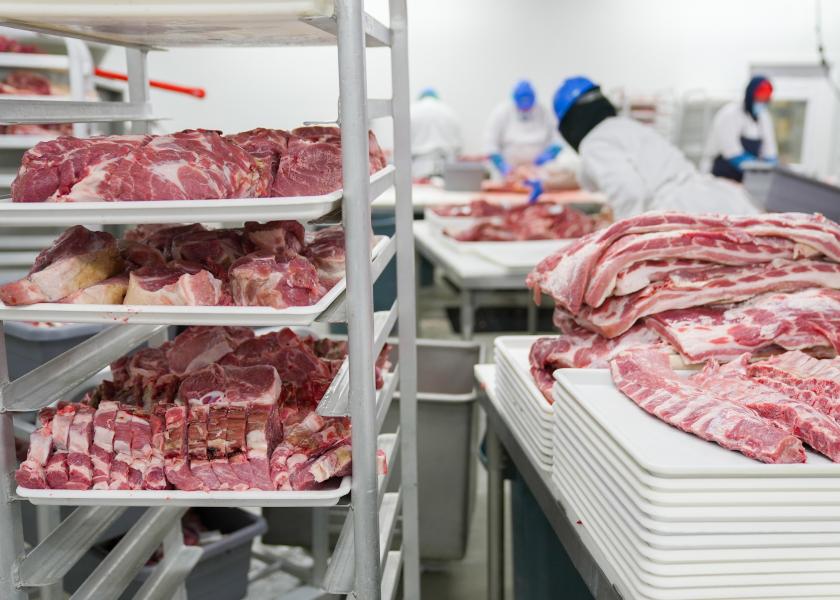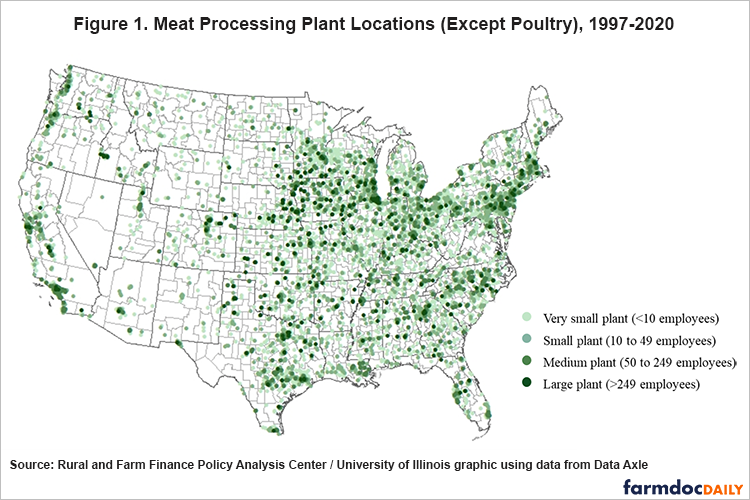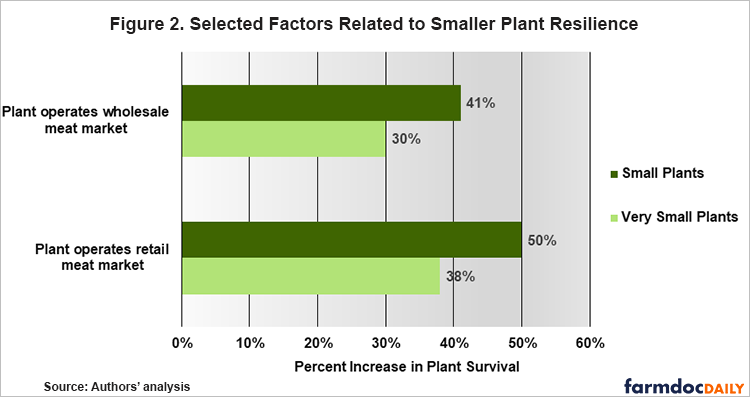Post-Pandemic Meat Processing Plants: Survival of the Fittest

The U.S. meat processing industry has become a focus of policymakers following the challenges of the COVID-19 pandemic. In 2021, USDA announced a $1 billion investment to expand meat and poultry processing capacity in small and medium plants. Support for U.S. meat processing is increasing after President Biden issued an executive order in 2021 to promote competition in the U.S. economy, with a focus on supporting small family farms.
A recent study by Rural and Farm Finance Policy Analysis Center and the University of Illinois sheds light on factors contributing to the rise and fall of these plants.
The research analyzes characteristics related to the probability of meat processing plant survival, finding that business diversification is most important for smaller plants and local context is more important for larger plants.
On average, plants in the U.S. lasted for 9.7 years before failing, and most of them were found in counties with a higher population due to their proximity to workers and consumers.
The study revealed several additional insights:

- Smaller plants that diversified into retail and wholesale meat markets were more likely to survive than those that did not.

- Large plant survival was mostly associated with workforce quality and quantity, the availability of labor and higher concentrations of local plants in nonmetro areas.
- Technical assistance might be needed to help smaller plants diversify into operating retail or wholesale meat markets, but this solution is not a one-size-fits-all approach and local demand and income will need to be sufficient to support the products.
- Workforce solutions such as safety investments, automation research and development, and increasing work visas could improve the survival of large food processing plants in rural America.
- Female-operated rural plants have higher failure rates, suggesting they might need additional technical assistance.







